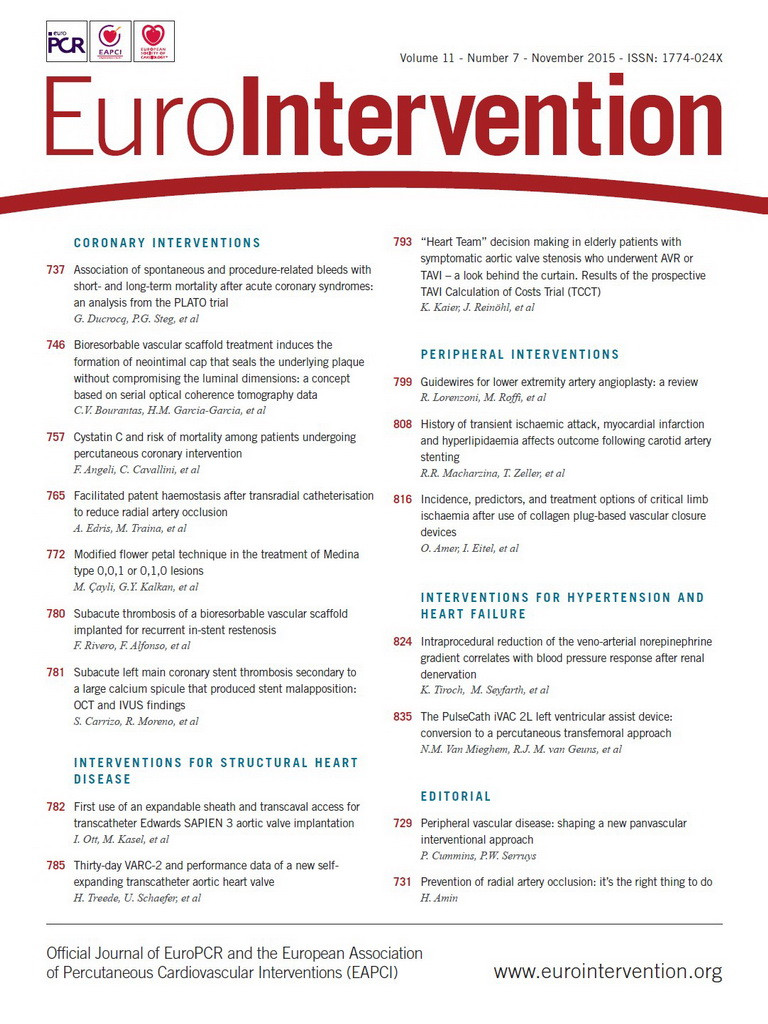
The Arabian Gulf countries have shown a rapid growth in their populations and the required healthcare infrastructure to meet the growing demands. However, despite well-equipped hospitals and well-trained medical staff, research has lagged behind. Over the last decade, an attempt at improving research has concentrated on the typical profile of the cardiovascular patient in the Gulf region as he presents with acute coronary syndromes, acute heart failure and acute atrial fibrillation. This multinational effort culminated in more than 20,000 patients being enrolled in several registries (Gulf RACE 1,2; Gulf COAST; Gulf CARE; Gulf SAFE)1-5 which looked at all these different patient subsets. This evolved to include PCI patients in the ITALIC PLUS and ABSORB registries, as well as several other phase 3 pharmaceutical trials.
The research trend is still in its infancy, with a cultural and clinical shift required for it to gain and keep up its momentum. It has to start with the local cardiologist who sees and recognises the importance of such a step. It has now become a growing requirement to publish in order to ascend to both clinical and university positions. There is better hospital electronic data collection with cardiac care units and catheterisation laboratory registries. Several local clinical research organisations (CROs) have now come into existence with the slow appearance of the “research nurse” who was previously “missing”. The importance of education cannot be stressed enough. The recent Research Day at EuroPCR 2015 was a productive experience for physicians and research nurses alike. In addition to education and collaboration, Gulf PCR-GIM has research as one of its long-term visionary goals. Better knowledge of the Gulf area, confidence in the standards of practice and clinical care given, as well as the industry recognising the importance of and potential growth for research in this untapped area, will hopefully see it bloom. Lastly, patients need to appreciate the importance of research, for, without their educated consent, the wheels of research will grind to a halt. Herein lies the cultural “research awakening” that needs to emerge from hibernation. In this issue of EuroIntervention, colleagues from the Cleveland Clinic Abu Dhabi add to the Arabian Gulf region research momentum6. Although the authors performed the study in Los Angeles, the research experience gained abroad and brought home can only benefit the development and augmentation of studies from the region.
Radial artery occlusion (RAO) is the most common complication of transradial interventions, with an incidence of 2-18%7. Although asymptomatic in most cases, maintaining radial artery (RA) patency is important to allow future coronary artery catheterisation, preserve conduits for future coronary bypass, and maintain arterial access for haemodialysis and formation of an AV fistula. Rare cases of hand ischaemia with necrosis have been reported. RAO has been attributed to radial artery thrombosis and arterial wall injury resulting from inadequate anticoagulation, prolonged occlusive haemostasis, larger sheath diameters (low radial artery to sheath ratio), and repeated entry8. Routine assessment of RA patency prior to discharge and on follow-up visits is recommended, with some cases undergoing spontaneous recanalisation at one month9.
Patent haemostatic compression of the RA and decreasing compression time have emerged as the strongest post-procedural predictors of RA patency. Decreasing compression time from six to two hours has been shown to increase RA patency9. Patent haemostasis, defined as maintaining RA blood flow with no external arterial bleeding, has been shown to reduce RAO by 59% at 24 hours, and by 75% at 30 days compared to standard haemostasis10. Other techniques using mean arterial pressure (MAP) to guide haemostatic RA patency during pneumatic compression are cumbersome and labour-intensive11. A postprocedural/pre-haemostasis intra-arterial nitroglycerine bolus has been shown to reduce the incidence of RAO12.
In this issue of EuroIntervention, Edris and colleagues present a novel approach for facilitated patent haemostasis using a rapid deflation technique (RDT) to lower RAO rates6. One third of the 201 subjects in this RAO study had percutaneous coronary intervention and all had 6 Fr sheaths used. Fifteen minutes after TR Band application, RA patency was evaluated using the reverse Barbeau test with occlusion of the ulnar artery. The TR Band was then deflated to a goal of 7 mL inflation volume while maintaining haemostasis. If bleeding occurred, 2 mL of air was reintroduced. The TR Band remained in place for two hours and was then removed. This was compared to the standard deflation technique (SDT) of TR Band application (18 mL initial volume) with removal of air until pulsatile bleeding was seen; haemostasis was then achieved with re-introduction of 2 mL of air. RAO was seen in 2% in the RDT and in 14.9% in the SDT at one day post procedure, a highly significant finding. The deflation technique remained an independent predictor of RAO (OR 0.117). There was no difference in TR Band reinflation or haematoma formation.
It is interesting to note that, using the standard technique of TR Band application (SDT), more than 60% had occlusion of the RA as assessed by the reverse Barbeau test. Most hospital protocols would then leave the TR Band as is, to be removed two to four hours later with or without gradual “blind” deflation. The RDT outlined here shows an alternative method that is quick and objective and guides haemostasis and maintenance of RA patency. Waiting for 15 minutes as the patient is transferred off the table to the recovery room, and performing a single deflation technique to an average TR Band volume of 8.1 mL, resulted in more than 95% RA patency with good haemostasis and no increase in haematomas or bleeding rates. The 15-minute hiatus enabled further TR Band deflation to be performed, potentially as a result of formation of a platelet plug and thrombosis of the entry tract (that is not present on initial removal of the sheath).
RAO is the next hurdle to overcome in transradial interventions (TRI). This study presents a rapid and safe technique to add to the manoeuvres that preserve the patency of the RA and decrease RAO. With the worldwide increase in TRI uptake, the preference shown by patients and physicians alike, as well as the lower morbidity and mortality data seen in high-risk PCI, keeping this important conduit patent will be of paramount importance. It’s the right thing to do.
“Success is simple. Do what’s right, the right way, at the right time.” Arnold Glasow
Conflict of interest statement
The author has no conflicts of interest to declare.

